Terrible Beauty at
Dublin Contemporary
As the plane approached Dublin airport, the greenest of fields visible below, it suddenly hit me why the name The Emerald Isle is forever memorialized in Johnny Cash’s overwrought lyrics of Forty Shades of Green.
On our way to Dublin Contemporary the taxi driver states that in the midst of Ireland’s post-crash deep recession, with a banking system gone bust and euro currency declining, it is a much anticipated, needed event. It reveals the upbeat mood of the Irish and their capacity to face adversity with optimism.
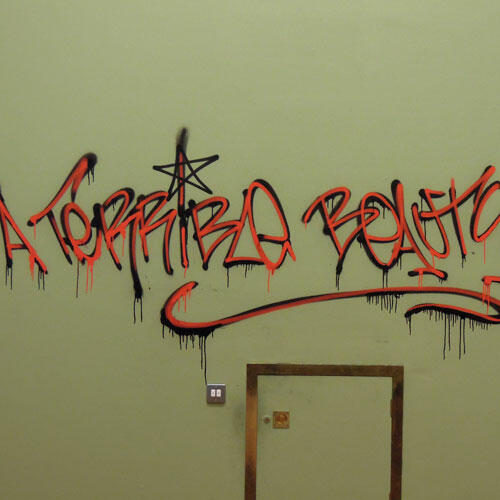
The event spreads out over five venues and runs over the course of two months. Its title Terrible Beauty: Art, Crisis, Change & The Office of Non-Compliance refers to the wellknown W. B. Yeats poem of the 1916 Irish uprising against British rule. The event has a packed menu of interrelated weekly events with Roadworks offering an array of street and public art.The curators’ hands-on approach is notable in radical educational programs that question contemporary art’s relevance vis-a-vis complex education issues.
Dublin Contemporary is the brainchild of two curators from Latin America, Christian Viveros-Fauné (critic and curator from Chile, living and working in NewYork) and Jota Castro (former diplomat turned artist from Peru, living and working in Europe). Staging this multifarious, ambitious project aspiring to be a biennial, involved a host of individuals and a small teamprofessionals who brought the event to fruition in only eight months! It is a phenomenal feat considering its $800,000 budget, small when compared to seven-digit budgets of other suchmega-events.The budget covered 114 international artists and a bare-bones renovation of its main venue, the large neoclassical building and former home to University College Dublin, Earlsfort Terrace. According to Viveros-Fauné it is “the heart” of Dublin Contemporary. Years of neglect have left an attractive patina on its labyrinth interior where corridors are flanked by classrooms some still with their original blackboards and functioning for solo or two-person exhibits. It will remind NewYork visitors of MoMA PS 1 when it first opened in late 1970s in the abandoned Public School#1, Long Island City. Kendell Geers’ powerful work on South Africa’s racial and social issues is seen next to others, in the converted adjacent former tennis courts, The Annex. On its exterior is an enigmatic and comical footnote to the ‘noncompliant’ state of affairs at Dublin Contemporary where Mark Jenkins placed a diagonal upside-down male figure.
The Office of Non-Compliance centers on curators’ intention to do “to “things differently….and celebrate art’s historically signal strength: its capacity to re-imagine the world, one artwork at a time. Art, like humor, is an act of significant mental rebellion. In our own stubborn terms, art constitutes non-compliance.” Among other international artists, Tania Bruguera and Jorge Méndez Blake, two of fifteen artists from Latin America, will perform here. Ms. Bruguera’s Immigrant Movement International is an art project in the form of an artist-initiated socio-political movement, undoubtedly as ‘noncompliant’ as they come! Other Latin American ‘noncompliant’ works seen at Earlsfort Terrace are by Alejandro Almanza, Nicole Franchy and Carlos Garaicoa.
Curator Jota Castro’s ‘non-compliant’ action took him over three months throughout Ireland visiting 500 studios, resulting in a refreshingly diverse group of lesser-known Irish artists. A surprise to those unfamiliar with Ireland’s new art and seen in the context of international artists such asWillie Doherty, Brian McGuire, James Coleman, Jannis Kounellis, Alice Neel, Braco Dimitrievic, Jeanne Susplugas, Richard Mosse, including the studio of Francis Bacon, they provided a rounded perspective! Adjacent to Earlsfort Terrace, in the Iveah Garden is Alexandre Arrechea‘s site-specific sculpture No One Listens, 2011. It is a tree that has grown large ears. Arrechea stated, “When no one listens, art will continue to listen, observe and reflect on what is occurring”. Formerly a private Guinness family garden, the spectacular grounds and its arboretum are a quiet spot in the middle of bustling downtown Dublin to rest, meet and listen.
Back inside Earlsfort Terrace’s is Teresa Margolles’ space where behind a plain table Antonio H. Camacho, a key-maker from Ciudad Juárez, Mexico-U.S. border engraves keys. Margolles is internationally known for her provocative and compelling explorations on the subject of death. For approximately 15 years she used the morgue as a laboratory and study, insisting that not even death can function as a leveler of social inequality.
In Dublin her subject has shifted from death to life bringing the urgent message how living in a continual state of terror brings new meaning to the value of life. While engraving keys Antonio talks with visitors about his plight, narrating details of Narco drug lords and concomitant havoc and devastation. Once finished, the keys are hung on a clothesline: dangling memorabilia of visitors who momentarily became implicated
in a reality far beyond the apparent safety of the art world.
Javier Tellez’s One Flew Over the Void (Bala Perdida) is another take onMexico’s border that is tragicomic. Created in 2005, the work continues to hold its own. Done with the State Psychiatric Hospital of Mexicali, the patients’ parade to a Mariachi band while a human cannonball, David Smith, is launched across the border in an allegory of mental and physical freedom for those who live a socially marginalized existence.
While Margolles’s work stands out, she is in great company of other artists dealing with war, terrorism and surveillance. For instance, Alain Declercq’s War Games, 2006 reflect on military intelligence and the particular aesthetic of the images it generates. Or, Omar Fast’s Five Thousand Feet is the Best with its uncanny car explosions, triggered and filmed from five thousand feet.
Terrible Beauty is not a ‘neatnik’ affair; instead, it confronts a messy reality, one that resonates with our current world. Patrick Hamilton’s circular floor piece of cut, sliced, and folded Machetes, makes up for it. A tool used for farming, it is also a weapon used in peasant uprisings. El Mundo en Llamas by Fernando Bryce echoes a similar pathos albeit in a more deadpan fashion. His serial drawings serve to critically probe visual and written media on topics dealing with race, historical events, nationhood, and identity.
The pairing of Monica Bonvicini’s spray paint wall slogan Add Elegance to Your Poverty (2002) next to the shimmery body of David Zink Yi’s magnificent 20-foot-long ceramic squid lying in its pool of slippery ink, Untitled (Architeuthis) (2010) is a brutal allusion to Terrible Beauty: one can fall or stand up.Wilfredo Prieto‘s cloud of razorwire hovers fromthe ceiling threatening to crash down onto visitors. U.S. artist Nina Berman’s Marine Wedding shows another face of war; that of a marine disfigured and severely wounded by Iraqi suicide bombers. Looking turns one into a voyeur.
The curators’ statement “Art, like humor, is an act of significant mental rebellion,” is visible in several artists’ interventions such as the outstanding young Irish artist, Ciara Scanlan. Her Hungry Again is a karaoke installation of Gone with the Wind when Scarlett O’Hara at the film’s end cries “As God is my witness, I will never be hungry again”.The work points to the effects of the global recession and the will to thrive in the face of adversity which Dublin Contemporary surely proves. It has positioned Ireland as a sophisticated international capital of culture, while it captures the dark radiance of a country that finds itself, at this particular moment, on the crossroads of history. One hopes Earlsfort Terrace will become Dublin’s Kunsthalle.
-
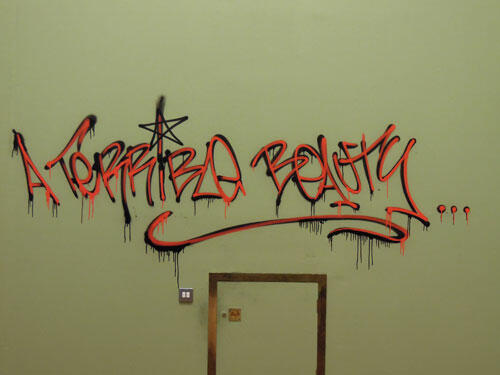 Photo/Foto: Renato Ghiazza. Dublin Contemporary 2011. Courtesy/Cortesía: Dublin Contemporary 2011.
Photo/Foto: Renato Ghiazza. Dublin Contemporary 2011. Courtesy/Cortesía: Dublin Contemporary 2011. -
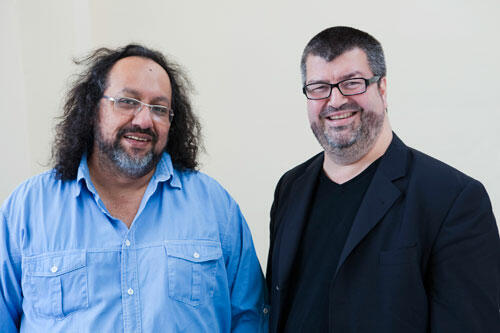 Photo/Foto: Renato Ghiazza-Dublin Contemporary 2011. Courtesy/Cortesía: Dublin Contemporary 2011.
Photo/Foto: Renato Ghiazza-Dublin Contemporary 2011. Courtesy/Cortesía: Dublin Contemporary 2011. -
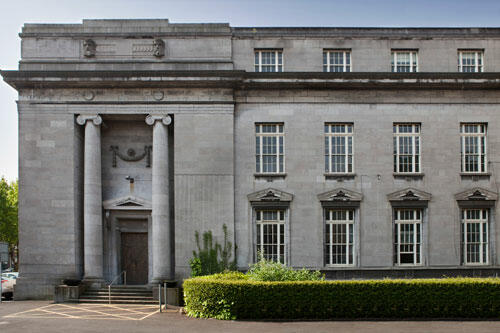 Photo/Foto: Renato Ghiazza. Dublin Contemporary 2011. Courtesy/Cortesía: Dublin Contemporary 2011.
Photo/Foto: Renato Ghiazza. Dublin Contemporary 2011. Courtesy/Cortesía: Dublin Contemporary 2011. -
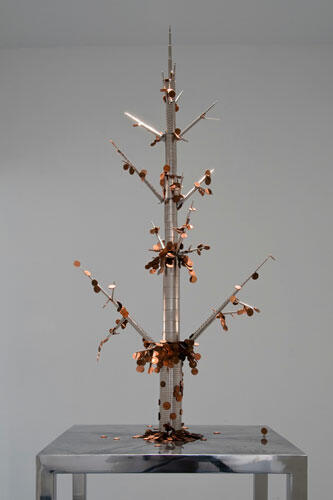 Carlos Garaicoa. El Árbol de la Abundancia, 2011. Courtesy/Cortesía Carlos Garaicoa. Photo/Foto: Oak Taylor-Smith. Courtesy/Cortesía: Dublin Contemporary 2011.
Carlos Garaicoa. El Árbol de la Abundancia, 2011. Courtesy/Cortesía Carlos Garaicoa. Photo/Foto: Oak Taylor-Smith. Courtesy/Cortesía: Dublin Contemporary 2011. -
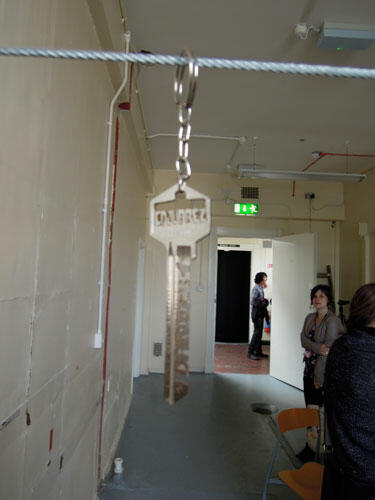 City´s Keys / Las Llaves de la Ciudad, 2011. Site-specific, table, chair, keys, steel wire, dimensions variable. Courtesy/Cortesía the artist, Peter Kilchmann and Labor Gallery. Site-specific, mesa, silla, llaves, alambre de acero, dimensiones variables.
City´s Keys / Las Llaves de la Ciudad, 2011. Site-specific, table, chair, keys, steel wire, dimensions variable. Courtesy/Cortesía the artist, Peter Kilchmann and Labor Gallery. Site-specific, mesa, silla, llaves, alambre de acero, dimensiones variables. -
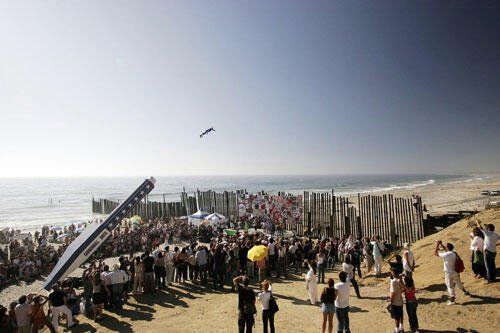 One Flew Over the Void (Bala Perdida), 2005. Single channel video projection. Courtesy of/Cortesía de Javier Tellez and Arratia Beer. Proyección de video monocanal. 8. Alain DeClercq. War Games, 2006. Desk, seats, DVD players, LCD screens, headphones. Courtesy/Cortesía Alain DeClercq and Loevenbruck. Escritorio, asientos, reproductor DVD, pantallas LCD y audífonos.
One Flew Over the Void (Bala Perdida), 2005. Single channel video projection. Courtesy of/Cortesía de Javier Tellez and Arratia Beer. Proyección de video monocanal. 8. Alain DeClercq. War Games, 2006. Desk, seats, DVD players, LCD screens, headphones. Courtesy/Cortesía Alain DeClercq and Loevenbruck. Escritorio, asientos, reproductor DVD, pantallas LCD y audífonos. -
 Untitled (from the Marine Wedding Series), 2006. Pigment print. Courtesy/Cortesía Nina Berman. Impresión por pigmento.
Untitled (from the Marine Wedding Series), 2006. Pigment print. Courtesy/Cortesía Nina Berman. Impresión por pigmento. -
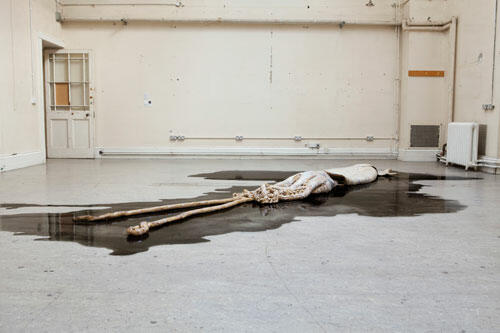 Untitled (Architeuthis), 2010. Burnt and glazed clay. Courtesy the artist, Hauser & Wirth and Johann König. Photo/Foto Renato Ghiazza-Dublin Contemporary 2011. Courtesy/Cortesía Dublin Contemporary 2011. Barro cocido y vidriado. Cortesía del artista, Hauser & Wirth y Johann König.
Untitled (Architeuthis), 2010. Burnt and glazed clay. Courtesy the artist, Hauser & Wirth and Johann König. Photo/Foto Renato Ghiazza-Dublin Contemporary 2011. Courtesy/Cortesía Dublin Contemporary 2011. Barro cocido y vidriado. Cortesía del artista, Hauser & Wirth y Johann König. -
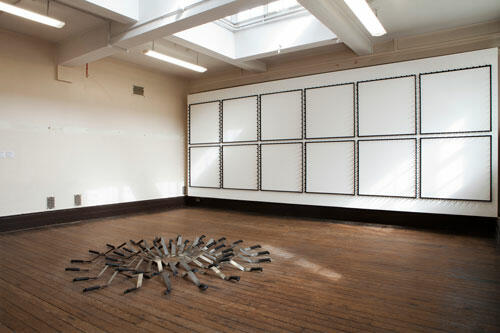 Machete Construction, 2010. Steel and plastic. Courtesy/Cortesía González y González Gallery and Baró Gallery. Photo/Foto Renato Ghiazza-Dublin Contemporary 2011. Acero y plástico.
Machete Construction, 2010. Steel and plastic. Courtesy/Cortesía González y González Gallery and Baró Gallery. Photo/Foto Renato Ghiazza-Dublin Contemporary 2011. Acero y plástico.


